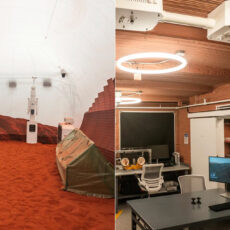
For decades, astronomers have spun a dramatic tale: our Milky Way galaxy, a shimmering spiral of stars, gas, and dust, was destined to smash into its cosmic neighbor, the Andromeda galaxy, in a spectacular galactic merger billions of years from now. But a new study, powered by NASA’s Hubble Space Telescope and the European Space Agency’s Gaia observatory, is rewriting this narrative. After running 100,000 computer simulations, researchers now suggest there’s only a 50-50 chance of this galactic showdown. The Milky Way and Andromeda might just glide past each other, like ships in the cosmic night.
This revelation comes from a team led by Till Sawala at the University of Helsinki, who dug into the dynamics of our Local Group—a collection of galaxies including the Milky Way, Andromeda, and smaller companions like the Triangulum galaxy. Previous predictions, based on Hubble data from 2012, pegged Andromeda as barreling toward us at 110 kilometers per second, setting the stage for a collision in about 4.5 billion years. But the new study, published in 2025, throws a curveball. By incorporating fresh data from Gaia and Hubble, plus the gravitational influence of nearby galaxies, the team found that Andromeda’s path isn’t as certain as once thought. “Predicting future mergers requires knowledge about the present coordinates,” notes a post from BassonBrain.
- Interactive model – Inspire kids to build a representation of the Earth, Sun and Moon in orbit with this LEGO Technic Planet Earth and Moon in Orbit...
- Educational space toy – Kids can turn the crank to see how the Earth and the Moon orbit around the Sun
- Includes months and moon phases – This solar system toy includes printed details, like the month and moon phases to help kids see how the Earth’s...
Sawala’s team ran their simulations with a supercomputer, modeling the Local Group’s dance over billions of years. In roughly half the scenarios, the Milky Way and Andromeda do collide, potentially merging into a single, larger galaxy—a process that could stretch over billions of years, with stars rarely crashing but instead settling into new orbits. In the other half, the galaxies perform a cosmic flyby, passing close enough to gravitationally tug at each other but ultimately drifting apart. “It is far less inevitable than astronomers had previously suspected,” the Hubble Space Telescope team shared.
Why the shift in thinking? It’s all about the neighbors. Earlier models focused heavily on the Milky Way and Andromeda, treating them as the main players in a two-body problem. But the Local Group isn’t a simple duet. The Triangulum galaxy, along with smaller dwarf galaxies, exerts subtle gravitational pulls that can nudge Andromeda’s trajectory. Gaia’s precise measurements of stellar positions and velocities helped refine these models, revealing that Andromeda’s approach might be more of a glancing blow than a head-on crash. “New research led by Helsinki University involving Durham Physics has cast doubt on the long-held theory,” Durham University noted.
The simulations suggest that in 7 to 8 billion years, we might see a close encounter, but whether it’s a merger or a miss depends on factors we’re still pinning down. “In half the simulations, M31 & Milky Way fly past each other in the first round, then later collide… But in the other half, the two galaxies escape entirely,” Xavi_Bros explained.
What would a collision look like? It’s not the explosive crash you might envision. Galaxies are mostly empty space, so stars would likely pass each other like dancers in a crowded ballroom, their orbits reshaped by gravity. Over billions of years, the two spirals could blend into an elliptical galaxy, a more rounded, less structured collection of stars. If they miss, the gravitational tug could still distort their shapes, flinging stars into new paths. Either way, humanity won’t be around to witness it—our Sun will have ballooned into a red giant long before, swallowing Earth in about 5 billion years.










